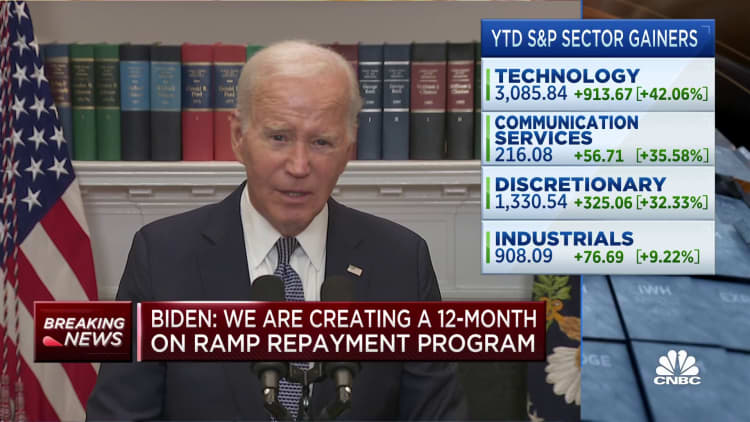U.S. President Joe Biden delivers remarks on canceling student debt at Culver City Julian Dixon Library on February 21, 2024 in Culver City, California.
Mario Tama | Getty Images
A narrower aid package Biden hopes will survive
The president’s Plan B for student loan forgiveness will likely target several groups of borrowers, including those who’ve been in repayment for decades and people who are experiencing financial hardship.
Immediately after the Supreme Court struck down Biden’s $400 billion student loan forgiveness plan last June, his administration began working on a revised assistance package.
The Biden administration believes its updated plan will survive legal challenges this time for several reasons. One, it’s far narrower than its first attempt, which would have impacted as many as 40 million Americans.
“I think it would be easier to justify in front of a court that is skeptical of broad authority,” said Luke Herrine, an assistant professor of law at the University of Alabama, in an earlier interview with CNBC.
Student debt relief activist rally in front of the U.S. Supreme Court on June 30, 2023 in Washington, DC. The Supreme Court stuck down the Biden administration’s student debt forgiveness program in Biden v. Nebraska.
Kevin Dietsch | Getty Images
It is also using a different law — the Higher Education Act rather than the Heroes Act of 2003 — as its legal justification.
The HEA was signed into law by President Lyndon B. Johnson in 1965, and allows the education secretary some authority to waive or release borrowers’ education debt.
The Heroes Act was passed in the aftermath of the 9/11 terrorist attacks, and grants the president broad power to revise student loan programs during national emergencies.
The conservative justices didn’t buy that argument.
″’Can the Secretary use his powers to abolish $430 billion in student loans, completely canceling loan balances for 20 million borrowers, as a pandemic winds down to its end?'” Chief Justice John Roberts wrote in the majority opinion for Biden v. Nebraska. “We can’t believe the answer would be yes.”
Lastly, the Biden administration has now turned to the rulemaking process to deliver its relief. The president previously attempted to cancel the debt through executive action.
As part of the rulemaking process, a team of negotiators met four times to try to establish the new parameters of the updated policy. The final session concluded in February.
Based on the timeline of regulatory changes, the proposal will likely become public within weeks, Kantrowitz said.
“Typically at the end of the negotiated rulemaking, a month or so later you have publication of the proposal,” he said.
There will then be a public comment period, which is likely to last for at least 30 days.
Credit: Source link




